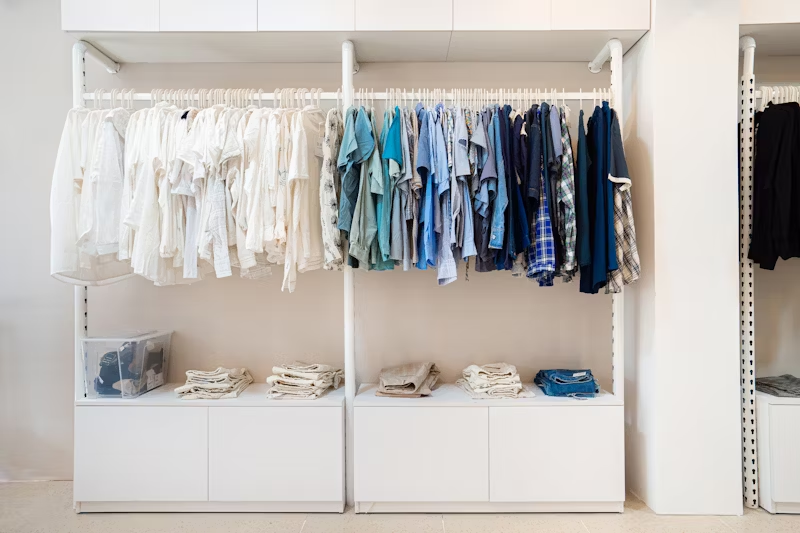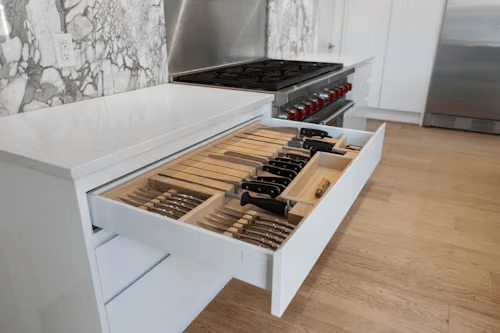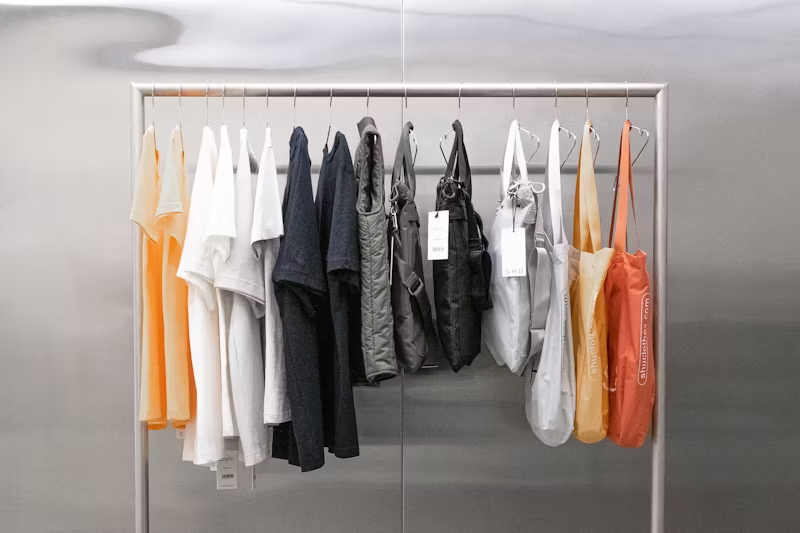A well-organized walk-in closet can significantly enhance the functionality and aesthetic appeal of a bedroom. Efficient walk-in closet organization involves maximizing the available space, ensuring easy access to items, and maintaining a clutter-free environment. By implementing practical storage solutions and strategic placement of belongings, individuals can create a tailored system that suits their specific needs.
When organizing a walk-in closet, it is essential to assess the available space and consider the types of items that will be stored. Utilizing shelving, hanging rods, and drawers effectively can help optimize storage capacity and keep the area tidy. Additionally, incorporating storage accessories such as baskets, bins, and dividers can further streamline the organization process, making it easier to locate and access items when needed. A well-organized walk-in closet not only contributes to a more functional living space but also promotes a sense of order and harmony within the bedroom environment.
Assessing Your Walk-In Closet Space
When it comes to organizing a walk-in closet, the first step is to assess the space you have available. This will help you determine the best storage solutions to use and how to maximize the space you have. Here are some tips on how to assess your walk-in closet space effectively:
Determining Space and Storage Needs
The first step in assessing your walk-in closet space is to determine how much space you have available and what your storage needs are. Measure the dimensions of your closet, including the height of the walls, the width of the shelves, and the depth of the space. This will give you a clear idea of the storage solutions that will fit best in your closet. Take note of any unique features in your closet, such as built-in shelving, hanging rods, or drawers.
Once you have measured your closet, it’s time to determine your storage needs. Consider the types of items you will be storing in your closet, such as clothing, shoes, and accessories. Decide how much space you need for each item and what type of storage solution would work best for each item. For example, you may want to use shelves for folded clothing, hanging rods for dresses and suits, and shoe racks for shoes.
Maximizing Vertical Space
One of the best ways to maximize the space in your walk-in closet is to think vertically. By using the walls of your closet, you can create additional storage space without taking up valuable floor space. Use shelves to store folded clothing, shoes, and accessories. You can also use hanging shelves to add extra storage without taking up floor space. Hang them from the rod to store folded clothes, shoes, or handbags.
Another way to maximize vertical space is to use hooks and hangers. Hooks can be used to hang belts, scarves, and other accessories. Hangers can be used to hang clothing, freeing up space on your shelves for other items. Consider using a combination of hooks, hangers, and shelves to create a customized storage solution that works best for your needs.
In conclusion, assessing your walk-in closet space is the first step in organizing it effectively. By determining your space and storage needs and maximizing vertical space, you can create a customized storage solution that works best for you.
Sorting and Decluttering
Before organizing a walk-in closet, it is essential to sort through and declutter the items in it. This process can help to create more space and make it easier to find what is needed. The following subsections discuss how to discard unwanted items and categorize clothing and accessories.
Discarding Unwanted Items
The first step in decluttering a walk-in closet is to discard any unwanted items. This includes clothes, shoes, and accessories that no longer fit or are no longer worn. It is important to be honest with oneself and discard items that have not been used in over a year.
One way to discard unwanted items is to donate them to a charity or a thrift store. This will not only help someone in need but also reduce waste. Alternatively, items that are in good condition can be sold online or at a consignment store.
Categorizing Clothing and Accessories
Once unwanted items have been discarded, the next step is to categorize the remaining clothing and accessories. This can be done by sorting them into categories such as tops, bottoms, dresses, shoes, and bags.
It is recommended to sort the items by color within each category. This will make it easier to find specific items and create a visually appealing display. Another option is to sort items by season, with the current season’s items being more accessible.
To make the closet even more organized, it can be helpful to use storage solutions such as hanging organizers, shelves, and drawers. Hanging organizers can be used to store accessories such as belts, scarves, and hats. Shelves and drawers can be used to store folded items such as sweaters and jeans.
By discarding unwanted items and categorizing the remaining items, it is possible to create a more organized and functional walk-in closet.
Designing Your Closet Layout
When designing a walk-in closet, it’s important to consider the layout carefully to ensure that it meets your storage needs. Here are some tips to help you design a functional and organized closet.
Choosing the Right Storage Solutions
Before you start designing your closet layout, consider the type of storage solutions you need. Drawers, bins, and shelves are all great options for storing clothing, shoes, and accessories. If you have a lot of small items, consider using drawer dividers or shelf dividers to keep everything organized.
Open shelving is another great option for storing items that you want to display, such as handbags or hats. However, keep in mind that open shelving can get cluttered quickly if not organized properly.
Implementing an Organization System
Once you have chosen the right storage solutions, it’s time to implement an organization system. This can include hanging rods for clothing, shoe storage solutions, and a closet system that works for your specific needs.
When choosing a closet system, consider the color and style of the materials used. You want your closet to be functional, but also visually appealing. Additionally, make sure that the closet system you choose is durable and can withstand daily wear and tear.
By choosing the right storage solutions and implementing an organization system, you can design a walk-in closet that is both functional and stylish.
Clothing and Accessory Organization
When it comes to organizing a walk-in closet, clothing and accessory organization is key. Here are some tips and tricks to help keep your wardrobe in order.
Organizing by Type and Use
One effective way to organize clothing is to group items by type and use. For example, you can group shirts together, pants together, and dresses together. Within each category, you can subdivide by use, such as work clothes, casual clothes, and formal wear. This will help you quickly find what you need and keep your closet looking tidy.
Consider using hangers and rods to hang your clothes, as this will help prevent wrinkles and keep your clothes in good condition. You can also use hanging shoe organizers to store shoes and free up floor space. Jewelry can be organized in a jewelry box or hung on a jewelry organizer.
Seasonal Arrangement and Rotation
Another way to organize your closet is by season. For example, you can store your summer clothes in the back of the closet during the winter months, and vice versa. This will help you make the most of your space and keep your closet from becoming overcrowded.
Consider using fabric storage bins or vacuum-sealed bags to store seasonal clothing when it’s not in use. This will help protect your clothes from dust and pests. When it’s time to switch out your wardrobe for the season, take the opportunity to declutter and donate any items you no longer need.
Overall, organizing your walk-in closet takes time and effort, but the end result is well worth it. With a little planning and some smart storage solutions, you can keep your wardrobe in order and make getting dressed a breeze.
Maintaining an Organized Closet
Once you have organized your walk-in closet, it is essential to maintain it regularly to keep it clutter-free and well-organized. Here are some tips to help you maintain an organized closet.
Daily and Weekly Routines
To keep your closet organized, you should develop a daily and weekly routine. A daily routine should include putting away clothes and accessories that you have worn that day. A weekly routine should include sorting through your clothes and accessories, vacuuming and dusting your closet, and doing the laundry.
Sorting through your clothes and accessories weekly will help you identify items that you no longer wear or need. You can donate or sell these items to free up space in your closet. Vacuuming and dusting your closet will keep it clean and free of dust and debris. Doing the laundry regularly will ensure that you always have clean clothes to wear and that dirty clothes do not pile up in your closet.
Long-Term Closet Care
In addition to daily and weekly routines, you should also take care of your closet in the long term. This includes hiring a professional organizer or a certified professional organizer to help you organize your closet and keep it clutter-free. A professional organizer can provide you with tips and advice on how to maintain your closet and keep it organized.
You should also take the time to sort through your clothes and accessories every few months to ensure that your closet remains clutter-free. This will also help you identify items that you no longer wear or need, which you can donate or sell to free up space in your closet.
Maintaining an organized closet does not have to be time-consuming or difficult. By developing a daily and weekly routine and taking care of your closet in the long term, you can keep your closet clutter-free and well-organized.



